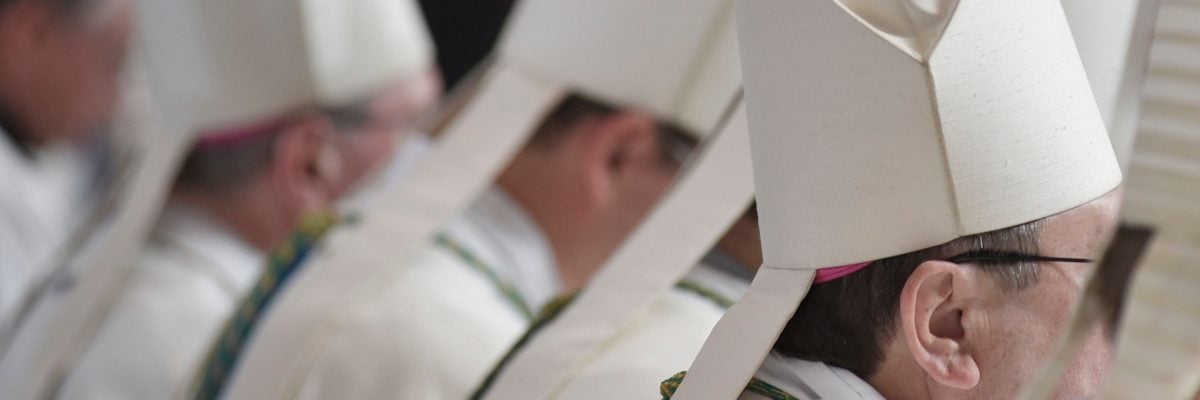
In the second century, the Church faced its first great heresy: Gnosticism. This confusing and eclectic system of beliefs threatened to destroy the Church in its infancy. Among Gnosticism’s tenets was the conviction that the material world is contemptible, unworthy of redemption. Unlike the Christian view that the material world was originally created good but then fell through sin, Gnostics believed that the world we live in was created as the result of some tragic accident. Only the spiritual world mattered; anything physical was to be left behind.
Against this heresy rose the great Church Father St. Irenaeus, who in The Scandal of the Incarnation explained that the key doctrine of Christianity is the Incarnation: the Word was made flesh and dwelt among us (John 1:14). The physical world is not to be held in contempt; on the contrary, it provides the means of our salvation.
Although eventually Gnosticism was conquered, its material/spiritual dualism has reared its ugly head throughout Church history. Many heresies borrowed it, including Manichaeism, the heresy embraced for a time by St. Augustine. And although Protestantism does not fully endorse a material/spiritual dualism, there are aspects of this flawed worldview in its belief system—for example, in its rejection of a visible Church.
In the most common Protestant view (since there are always competing views within Protestantism), the Church is an invisible entity made up of all Christian believers (how a “believer” is defined also varies among Protestants). Any visible manifestations, such as leaders or physical sacraments or buildings, are merely tools Christians use for practical reasons. None are essential to the Church, and all can be discarded if need be.
In contrast, the Catholic faith teaches that there is a visible Church here on earth, founded by Christ himself. It includes a visible membership—the baptized—and a visible leadership structure: the hierarchy of bishops and the service of ordained priests and deacons. These visible aspects are fundamental to the Church and cannot be discarded. Throughout history, many Christians have been scandalized at the visible quality of the Church, usually because of the un-Christian behavior of its members. Scandals within the Church emphasize the scandal of the Church.
There is a certain attractive neatness to the idea of a purely invisible Church. If a leader commits some egregious sin, then one can simply claim he wasn’t really part of the true, invisible Church (which contains only the pure and holy). Since the Church’s membership is invisible, this can never be disproven. We can even understand why this notion of an invisible Church gained so much traction in the sixteenth century; after all, this was a time of great moral crisis in the visible institution of the Catholic Church. Many priests were immoral and many bishops were corrupt, and some popes were both. How could these men be part of Christ’s Church? So the simple answer—they’re not—proliferated.
Yet in spite of all the scandalous sins among its clergy and hierarchy, Catholics continued to insist that Christ founded a visible Church, and that we can know with certainty who are the members and who are the leaders. Why this insistence? Because visibility is essential to each of the four marks of the Church: one, holy, catholic, and apostolic.
One: Visibility is perhaps most important to the oneness—the unity—of the Church. We see this clearly by the opposite example: the disunity of Protestantism, which teaches a purely invisible Church. If the universal Church is invisible, it doesn’t matter if you belong to the Presbyterians or Methodists or Lutherans. It also doesn’t matter, then, if your beliefs are unified. An emphasis on invisibility ultimately leads to tens of thousands of visible denominations teaching conflicting belief systems.
Holy: Although the visible Church has always had sinners in its midst, it has also always possessed the means of holiness. And the primary means of holiness are the very visible sacraments. Through material things such as water, bread, wine, and oil, Christ dispenses his graces upon his followers. With the sacraments, we can know with certainty that holiness is attainable; without the sacraments, we can only guess.
Catholic: To be catholic is to be universal. A purely invisible Church can claim universality, but only a visible Church can prove it. What we see in denominations claiming to be part of an invisible Church is constant breakups, with one faction claiming that another isn’t truly Christian. But in a visible Church, the Catholic Church, we can see with our own eyes the same faith practiced from America to Africa to Asia.
Apostolic: Christ himself picked twelve men to lead his Church. He wanted them to be the visible leaders so that all men would know that communion with the apostles meant communion with him. The apostles understood how important a visible leadership was, and so they appointed successors—the bishops—to take up their mantle after their deaths. The hierarchy of the Church is a visible sign of the continuity of the Church—in teaching and in practice—from the time of the apostles to today.
Even during a time of many scandals within the Church, there is nothing more scandalous than the Church itself. It reflects the reality that God has taken this broken material world—and its equally broken inhabitants—and uses it to bring us to him. It is a constant sign to the world that the material, physical world matters. We are each a body/soul composite, and so we need physical as well as spiritual signs to direct us to God. Just as God came into this world as a visible man, he gave us a visible Church to lead us into the next world.



